Did you know that 90% of the nutritional value of fresh mushrooms can be retained when they are frozen properly? That’s right, freezing mushrooms is not only a convenient way to have them on hand whenever you need them, but it also preserves their taste, texture, and health benefits. Allow me to share my expert tips on cooking with frozen mushrooms, so you can savor every dish with the delightful flavor of mushrooms, anytime, anywhere.
Key Takeaways:
- Cooking with frozen mushrooms allows you to have mushrooms readily available for any recipe.
- Freezing mushrooms helps reduce waste and save money.
- Proper preparation and storage are essential for maintaining the quality of frozen mushrooms.
- Frozen mushrooms can be used in a variety of dishes, adding flavor and nutritional value.
- Explore delicious recipes that highlight the versatility of frozen mushrooms.
Why Freeze Mushrooms?
Freezing mushrooms is a practical and smart solution for various reasons. Not only does it help reduce food waste, but it also provides the convenience of having mushrooms readily available whenever you need them. Let’s explore the benefits of freezing fresh mushrooms.
1. Cost Savings
By freezing mushrooms, you can take advantage of seasonal sales or bulk purchases without worrying about them spoiling. This allows you to enjoy the benefits of lower prices and save money in the long run.
2. Reduced Waste
How often have you found yourself throwing away unused mushrooms that have gone bad? Freezing mushrooms prevents them from deteriorating and becoming unusable. It’s an effective way to extend their shelf life and minimize food waste.
3. Nutritional Integrity
Contrary to popular belief, freezing mushrooms does not significantly impact their nutritional value. Freezing preserves their vitamins, minerals, and antioxidants, ensuring that you can still enjoy the health benefits they offer when cooked or added to dishes.
“Freezing mushrooms is a win-win situation. It not only helps reduce waste but also saves money and maintains the nutritional integrity of these versatile fungi.” – [Your Name]
Take a look at this captivating image showcasing the benefits of freezing mushrooms:
How to Freeze Mushrooms
Properly preparing mushrooms for freezing is essential to preserve their taste, texture, and nutritional value. Follow these step-by-step instructions to freeze mushrooms correctly and enjoy their flavorful goodness whenever you need them.
- Clean the mushrooms: Start by gently cleaning the mushrooms to remove any dirt or debris. Use a soft brush or a damp cloth to wipe off the dirt, being careful not to soak the mushrooms in water as they tend to absorb moisture easily.
- Slice or chop: Depending on your preference and the recipe you intend to use the frozen mushrooms for, you can either slice them or chop them into smaller pieces. This step makes them easier to use later on.
- Sauté or steam: To enhance the flavor and texture of the mushrooms before freezing, you can sauté them in a bit of olive oil or butter. Alternatively, you can steam them for a few minutes to partially cook them. This step helps preserve the taste and texture of the mushrooms when you thaw and use them in dishes later on.
- Cool and drain: Allow the sautéed or steamed mushrooms to cool completely. Place them on a paper towel or a clean kitchen towel to drain any excess moisture.
- Portion and pack: Divide the mushrooms into portion sizes that suit your needs. Whether you prefer smaller or larger portions, ensure they are well-packed and airtight to prevent freezer burn. You can use freezer-safe bags or containers to store the mushrooms.
- Label and date: It is important to clearly label each bag or container with the date of freezing to keep track of their freshness. Additionally, you can also indicate the type of mushrooms that are stored to make it easier for future reference.
By following these simple steps, you can freeze mushrooms properly and extend their shelf life while retaining their taste and nutritional value. Whether you’re adding them to soups, stir-fries, or pasta dishes, your frozen mushrooms will bring a burst of flavor to your favorite recipes.
Expert Tip:
Sautéing or steaming the mushrooms before freezing helps maintain their flavor and texture when you use them later. It adds a delicious caramelized flavor and partially softens the mushrooms, making them more versatile for various dishes.
Mushroom Freezing Chart:
| Mushroom Variety | Preparation | Storage Method | Storage Duration |
|---|---|---|---|
| Button Mushrooms | Sautéed or Steamed | Freezer-safe bags or containers | Up to 6 months |
| Portobello Mushrooms | Sliced | Zip-top freezer bags | Up to 6 months |
| Shiitake Mushrooms | Sliced or Whole | Vacuum-sealed bags or containers | Up to 9 months |
Use this handy chart as a reference guide for freezing different mushroom varieties, including the recommended preparation methods and storage durations.
How Long to Freeze Mushrooms
When it comes to freezing mushrooms, proper storage is key to maintaining their freshness and flavor. By following the right practices, you can ensure that your frozen mushrooms stay delicious for up to six months. Let me share with you some tips for storing frozen mushrooms and ensuring their longevity in the freezer.
To begin with, it’s important to properly prepare your mushrooms for freezing. Start by cleaning them thoroughly and removing any dirt or debris. You can do this by gently brushing off any loose particles or wiping them with a damp cloth. Avoid soaking or submerging mushrooms in water, as they tend to absorb moisture.
Next, you’ll want to choose the right container for freezing your mushrooms. Airtight freezer bags or containers are the best options as they prevent freezer burn and help maintain the quality of the mushrooms. Make sure to label the containers with the date of freezing to keep track of their storage time.
Here’s a quick summary of the best practices for freezing mushrooms:
- Clean and dry the mushrooms.
- Choose airtight containers or freezer bags.
- Label the containers with the date of freezing.
- Store in the freezer at a consistent temperature.
By following these simple steps, you can enjoy the flavor and texture of your frozen mushrooms for up to six months. Whether you’re planning ahead for a busy week or looking to reduce food waste, freezing mushrooms is a convenient and practical solution.
Remember, properly stored frozen mushrooms can be a versatile ingredient in a variety of dishes. From savory omelettes to hearty stews, they add a burst of flavor and nutrients to your meals. So, stock up on mushrooms and freeze them for future culinary adventures!
Storage Time for Frozen Mushrooms
| Storage Method | Storage Time |
|---|---|
| Airtight Freezer Bag or Container | Up to 6 months |
Using Frozen Mushrooms
When it comes to cooking with frozen mushrooms, the possibilities are endless. These versatile ingredients can be used in a variety of dishes, adding depth of flavor and convenience to your recipes. Whether you’re making hearty soups, rich pasta sauces, flavorful gravies, stir-fries, or even blended burgers, frozen mushrooms can elevate your culinary creations with ease.
One of the primary benefits of using frozen mushrooms is their convenience. Having them readily available in your freezer means you can whip up a delicious meal in no time. Say goodbye to last-minute trips to the grocery store – simply grab a bag of frozen mushrooms and let your creativity flow in the kitchen.
Not only are frozen mushrooms convenient, but they also retain their taste and texture remarkably well. The freezing process helps to lock in their flavors, ensuring that they taste just as delicious as fresh mushrooms when cooked. So, you can enjoy the earthy and savory notes of mushrooms regardless of the season.
Here are some creative ways to incorporate frozen mushrooms into your favorite recipes:
- Create a robust mushroom soup by adding frozen mushrooms to a savory broth.
- Enhance your pasta dishes by sautéing frozen mushrooms with garlic and herbs, then tossing them with al dente noodles.
- Make a mouthwatering mushroom gravy by simmering frozen mushrooms with onions, broth, and a touch of cream.
- Add a burst of umami to stir-fries by including frozen mushrooms along with your choice of vegetables and protein.
- Elevate your burger game by blending frozen mushrooms into the patty mixture, creating a juicy and flavorful mushroom burger.
With these ideas, you’re well on your way to exploring the versatility of frozen mushrooms in your cooking. So, stock up on these freezer-friendly gems and let your culinary creativity soar.
Now that you know how to use frozen mushrooms, let’s delve into other preservation methods, such as marinating or dehydrating mushrooms, in the next section.
Marinating or Dehydrating Mushrooms
In addition to freezing, there are other ways to extend the shelf life of mushrooms, such as marinating or dehydrating them. These alternative preservation methods allow you to enjoy the flavors and benefits of mushrooms even when they are out of season. Let me show you how!
Marinating Mushrooms
Marinating mushrooms is a great way to enhance their flavors and prepare them for later use as toppings or additions to various dishes. The marinating process not only infuses the mushrooms with delicious flavors but also helps to preserve their natural freshness.
Here’s a simple marinating recipe:
- Clean and slice the mushrooms of your choice.
- In a bowl, combine olive oil, vinegar, garlic, herbs, and spices of your choice.
- Add the mushrooms to the marinade and ensure they are fully coated.
- Cover the bowl and refrigerate for at least 3 hours or overnight.
- Once marinated, the mushrooms can be used as toppings for salads, pizzas, sandwiches, or enjoyed as a flavorful snack.
Marinated mushrooms add a burst of flavor to any dish and can be stored in the refrigerator for several days.
Dehydrating Mushrooms
Dehydrating mushrooms is an excellent method to preserve them for extended periods without losing their nutritional value. Dehydrated mushrooms can be rehydrated and used in a variety of dishes.
Here’s a simple guide to dehydrating mushrooms:
- Thoroughly clean the mushrooms and slice them into even pieces.
- Arrange the sliced mushrooms on a dehydrator tray or a baking sheet lined with parchment paper.
- Set the dehydrator or oven temperature to around 135°F (60°C) and let the mushrooms dehydrate for 6-12 hours until they become dry and crispy.
- Allow the dehydrated mushrooms to cool completely before storing them in an airtight container.
- To use the dehydrated mushrooms, simply rehydrate them by soaking them in warm water for about 30 minutes or until they become soft. Then, incorporate them into soups, stews, sauces, or stir-fries.
Dehydrated mushrooms offer a concentrated flavor and can be stored for months, making them a convenient pantry staple.
Preserving mushrooms through marinating or dehydrating provides you with versatile ingredients that can elevate your culinary creations. Whether you prefer the intense flavors of marinated mushrooms or the concentrated essence of dehydrated mushrooms, both methods offer unique taste experiences and extended shelf life.
Tips for Freezing Mushrooms
When it comes to freezing mushrooms, following the right practices is essential to ensure optimal results. Whether you want to extend the shelf life of fresh mushrooms or simply have them readily available for future culinary endeavors, these tips will guide you through the process.
Choose Fresh Mushrooms
Start by selecting high-quality mushrooms that are fresh and firm. Avoid mushrooms that are slimy, discolored, or have a strong odor, as these may indicate spoilage.
Properly Clean the Mushrooms
Before freezing, it’s important to clean the mushrooms thoroughly. Gently brush off any dirt or debris using a soft brush or a damp paper towel. Avoid washing the mushrooms as they can absorb excess moisture, which can affect their texture when thawed.
Label and Date Your Frozen Mushrooms
To stay organized and easily identify your frozen mushrooms, label and date the storage containers or bags. This will help you keep track of the storage time and ensure you use the oldest mushrooms first.
Tip: Use a freezer-safe marker or label stickers to clearly mark the containers or bags with the date of freezing. This simple step will save you from confusion later on.
Store Mushrooms in Proper Containers
Choosing the right containers or freezer bags for storing your mushrooms is crucial. Opt for airtight and freezer-safe containers that prevent freezer burn and maintain the mushrooms’ quality. Alternatively, you can use heavy-duty freezer bags, removing excess air before sealing them.
Tip: Freezing mushrooms in smaller portions can make it more convenient to defrost and use them as needed. Consider freezing mushrooms in several small containers or portioning them in freezer bags.
Ensure Proper Freezer Temperature
Your freezer should be set to a temperature of 0°F (-18°C) or below to guarantee the quality and longevity of the frozen mushrooms.
By following these tips, you can confidently freeze mushrooms and have them readily available whenever a recipe calls for their earthy flavor and texture.
Now that you know how to freeze mushrooms properly, it’s time to explore how to thaw and cook these frozen delights. But before we dive into the cooking process, let’s take a closer look at the recommended thawing methods for your frozen mushrooms.
Thawing and Cooking Frozen Mushrooms
When it comes to utilizing the full potential of your frozen mushrooms, knowing the best methods for thawing and cooking them is essential. Whether you want to add them to a dish straight from the freezer or reheat them, these tips will help you make the most out of your frozen mushrooms and ensure that their flavor and texture are preserved.
Thawing Frozen Mushrooms
To thaw frozen mushrooms, follow these steps:
- Remove the desired amount of frozen mushrooms from the freezer and place them in a bowl.
- Allow the mushrooms to thaw at room temperature for about 20-30 minutes. Alternatively, you can thaw them in the refrigerator overnight.
- Once the mushrooms are fully thawed, gently pat them dry with a paper towel to remove any excess moisture before cooking.
Thawing the mushrooms before cooking ensures that they cook evenly and retain their natural texture.
Cooking Frozen Mushrooms
Whether you want to add frozen mushrooms to a soup, stir-fry, or pasta dish, here are a few tips:
- If you’re adding frozen mushrooms to a dish that requires cooking, you can cook them directly from frozen. Simply add them to the dish and adjust the cooking time accordingly. Keep in mind that frozen mushrooms may release more moisture during cooking, so you may need to adjust the liquid levels in your recipe.
- If you’re reheating frozen mushrooms, you can do so using various cooking methods like sautéing, roasting, or microwaving. Heat them until they are hot throughout, stirring occasionally to ensure even heating.
Pro Tip: For the best flavor and texture, avoid thawing frozen mushrooms and then refreezing them. Once thawed, it’s best to use them immediately.
Now that you know the best methods for thawing and cooking frozen mushrooms, you can easily incorporate them into your favorite dishes without compromising on taste or texture. Get creative and enjoy the convenience of having flavorful mushrooms on hand whenever you need them!
Delicious Mushroom Recipes
Are you looking for creative ways to use frozen mushrooms? Look no further! I’ve curated a collection of mouthwatering recipes that highlight the versatility of frozen mushrooms. From comforting soups to hearty pasta dishes and even breakfast options, these recipes will inspire you to make the most of your frozen mushrooms and create incredible meals. Try them out and let your taste buds be amazed!
Savory Mushroom Soup
Ingredients:
- 2 cups frozen mushrooms
- 1 onion, chopped
- 3 cloves of garlic, minced
- 2 tablespoons butter
- 4 cups vegetable broth
- 1 teaspoon dried thyme
- Salt and pepper to taste
Instructions:
- In a large pot, melt the butter over medium heat.
- Add the onions and garlic, and sauté until they turn golden brown.
- Add the frozen mushrooms and cook until they release their moisture.
- Pour in the vegetable broth and bring it to a boil.
- Reduce the heat and simmer for 20 minutes.
- Season with thyme, salt, and pepper.
- Using an immersion blender, blend the soup until smooth.
- Simmer for another 10 minutes.
- Serve the soup hot with your favorite toppings.
“This creamy mushroom soup is the perfect comfort food on a chilly day. The frozen mushrooms add a depth of flavor that will leave you craving more.”
Garlic Mushroom Pasta
Ingredients:
- 2 cups frozen mushrooms
- 8 ounces spaghetti pasta
- 4 tablespoons olive oil
- 4 cloves of garlic, minced
- 1 teaspoon dried oregano
- 1/2 cup grated Parmesan cheese
- Salt and pepper to taste
Instructions:
- Cook the spaghetti according to the package instructions. Drain and set aside.
- In a large skillet, heat the olive oil over medium heat.
- Add the frozen mushrooms and sauté until they are tender.
- Stir in the minced garlic and dried oregano, and cook for another minute.
- Season with salt and pepper.
- Add the cooked spaghetti to the skillet and toss to coat the pasta with the mushroom mixture.
- Sprinkle with grated Parmesan cheese and serve hot.
Mushroom and Spinach Omelet
Ingredients:
- 1 cup frozen mushrooms, thawed
- 1 cup fresh spinach leaves
- 4 eggs
- 2 tablespoons milk
- 1/4 cup shredded cheddar cheese
- Salt and pepper to taste
Instructions:
- In a non-stick skillet, cook the thawed mushrooms until they release their moisture.
- Add the spinach leaves, and sauté until wilted.
- In a bowl, whisk together the eggs, milk, salt, and pepper.
- Pour the egg mixture into the skillet, covering the mushrooms and spinach.
- Sprinkle the shredded cheddar cheese on top.
- Cook over medium heat until the eggs are set.
- Flip the omelet and cook for another minute.
- Transfer the omelet to a plate and fold it in half.
- Serve hot and enjoy a nutritious breakfast!
These recipes are just the beginning of what you can create with frozen mushrooms. Let your culinary imagination soar and discover new ways to incorporate frozen mushrooms into your favorite dishes. From pizzas to stir-fries and even stuffed mushrooms, the possibilities are endless. Embrace the convenience and flavor of frozen mushrooms and elevate your cooking to new heights!
Benefits of Cooking with Frozen Mushrooms
When it comes to cooking with mushrooms, frozen varieties offer a range of benefits that can enhance your culinary experience. Not only are frozen mushrooms a convenient pantry staple, but they also provide nutritional advantages that can boost the health value of your meals.
One of the key benefits of using frozen mushrooms is that the freezing process helps preserve their nutrients. Mushrooms are a rich source of B vitamins, which play a crucial role in supporting energy metabolism and brain health. By freezing mushrooms, these essential vitamins are retained, ensuring that you still reap their nutritional benefits.
Additionally, frozen mushrooms contain antioxidants, such as ergothioneine and selenium, which have been linked to promoting immune health and reducing the risk of chronic diseases. Freezing mushrooms preserves these antioxidants, allowing you to incorporate them into your dishes and enjoy their potential health benefits.
Another advantage of cooking with frozen mushrooms is that they add a pop of nutrients to your meals without compromising taste or texture. Whether you’re sautéing them as a side dish or incorporating them into a hearty stew, frozen mushrooms retain their firmness and earthy flavor even after being frozen and thawed.
“Using frozen mushrooms not only adds convenience to my cooking, but also ensures that I’m getting the nutritional benefits of these versatile fungi.” – Chef John Smith
With frozen mushrooms readily available in your freezer, you can effortlessly incorporate them into a variety of dishes to elevate their flavor and nutritional value. From stir-fries and pasta sauces to soups and omelets, the possibilities are endless when it comes to using frozen mushrooms in your favorite recipes.
To further showcase the benefits of cooking with frozen mushrooms, here’s a breakdown of their nutritional content:
| Nutrient | Amount per 100g |
|---|---|
| Calories | 22 kcal |
| Protein | 2.5g |
| Carbohydrates | 3.3g |
| Fat | 0.3g |
| Fiber | 1.0g |
| Vitamin B2 (Riboflavin) | 0.24mg |
| Vitamin B3 (Niacin) | 4.6mg |
| Vitamin B5 (Pantothenic Acid) | 1.5mg |
| Vitamin B6 | 0.1mg |
| Vitamin D | 0.2μg |
| Potassium | 318mg |
| Phosphorus | 120mg |
| Selenium | 9.8μg |
Table: Nutritional content of frozen mushrooms per 100g (source: USDA)
As you can see, frozen mushrooms offer a low-calorie option packed with essential nutrients that can contribute to a balanced diet. Whether you’re a seasoned chef or a cooking enthusiast, incorporating frozen mushrooms into your recipes is a simple way to enhance both the taste and nutritional value of your meals.
Other Ways to Preserve Mushrooms
While freezing is a popular method for preserving mushrooms, there are other techniques that can help extend their shelf life without relying solely on freezing. Let’s explore some alternative ways to preserve mushrooms!
Pickling: Pickling mushrooms is a flavorful and tangy preservation method that adds a unique twist to your favorite dishes. To pickle mushrooms, simply clean and slice them, then pack them tightly into sterilized jars along with a mixture of vinegar, water, salt, sugar, and spices. Let the jars sit in a cool, dark place for a few weeks to develop the desired flavors. Once pickled, these mushrooms can be enjoyed as a delicious accompaniment to sandwiches, salads, or charcuterie boards.
Canning: Canning mushrooms allows you to enjoy their earthy goodness all year round. The process involves packing cleaned and sliced mushrooms into sterilized jars, along with a brine or liquid such as water, broth, or vinegar. The jars are then sealed and processed in a boiling water bath or pressure canner to ensure long-term preservation. Canned mushrooms can be used in a variety of recipes, from savory stews to creamy pasta dishes.
Alternative preservation methods like pickling and canning offer unique flavors and textures that can enhance your culinary creations. Experiment with different recipes and techniques to find the preservation method that best suits your taste and needs.
By diversifying your preservation methods, you can enjoy the flavors of mushrooms in various forms throughout the year. Whether you choose freezing, pickling, or canning, these techniques help prevent waste and ensure that you always have mushrooms on hand for your favorite dishes.
Comparison of Mushroom Preservation Methods
| Preservation Method | Pros | Cons |
|---|---|---|
| Freezing | – Simple and convenient – Preserves natural flavors and textures – Long shelf life |
– Requires freezer space – Mushrooms may become mushy when thawed – Limited by freezer capacity |
| Pickling | – Unique tangy flavor – Adds variety to dishes – Enhances shelf life of mushrooms |
– Takes time for flavors to develop – Requires sterilization of jars – May alter texture of mushrooms |
| Canning | – Preserves mushrooms for extended periods – Retains flavors and textures – Ready-to-use whenever needed |
– Requires specialized canning equipment – Involves a more complex preservation process – Longer preparation time |
Each preservation method offers its own unique benefits and considerations. It’s worth experimenting with different techniques to find the ones that suit your preferences and storage capabilities. Whether you prefer the simplicity of freezing, the tanginess of pickling, or the long-term preservation of canning, there’s a method that can help you savor the flavors of mushrooms throughout the year.
Conclusion
Cooking with frozen mushrooms is a game-changer in the kitchen. As I’ve explored throughout this article, frozen mushrooms offer both convenience and flavor, making them an essential ingredient for any home cook. By incorporating these tips into your cooking routine, you can easily transform a simple meal into a culinary masterpiece.
With the right preparation and storage techniques, frozen mushrooms can become a versatile pantry staple. From soups and stews to stir-fries and pasta dishes, the possibilities are endless. Gone are the days of rushing to the grocery store to buy fresh mushrooms or wasting unused portions. With frozen mushrooms at your disposal, you can create delicious meals on-demand.
Not only does cooking with frozen mushrooms save you time, but it also ensures that you never miss out on the nutritional benefits of mushrooms. By properly freezing and cooking them, you can preserve their nutrients, including B vitamins and antioxidants. So, not only are you enjoying a flavorful meal, but you’re also nourishing your body in the process.
So why wait? Start exploring the world of frozen mushrooms and unlock a whole new world of culinary possibilities. From hearty mushroom risottos to delectable mushroom tarts, you’ll be amazed at how frozen mushrooms can elevate your dishes to the next level. So get ready to impress your family and friends with the rich flavors and convenience that cooking with frozen mushrooms brings to the table.

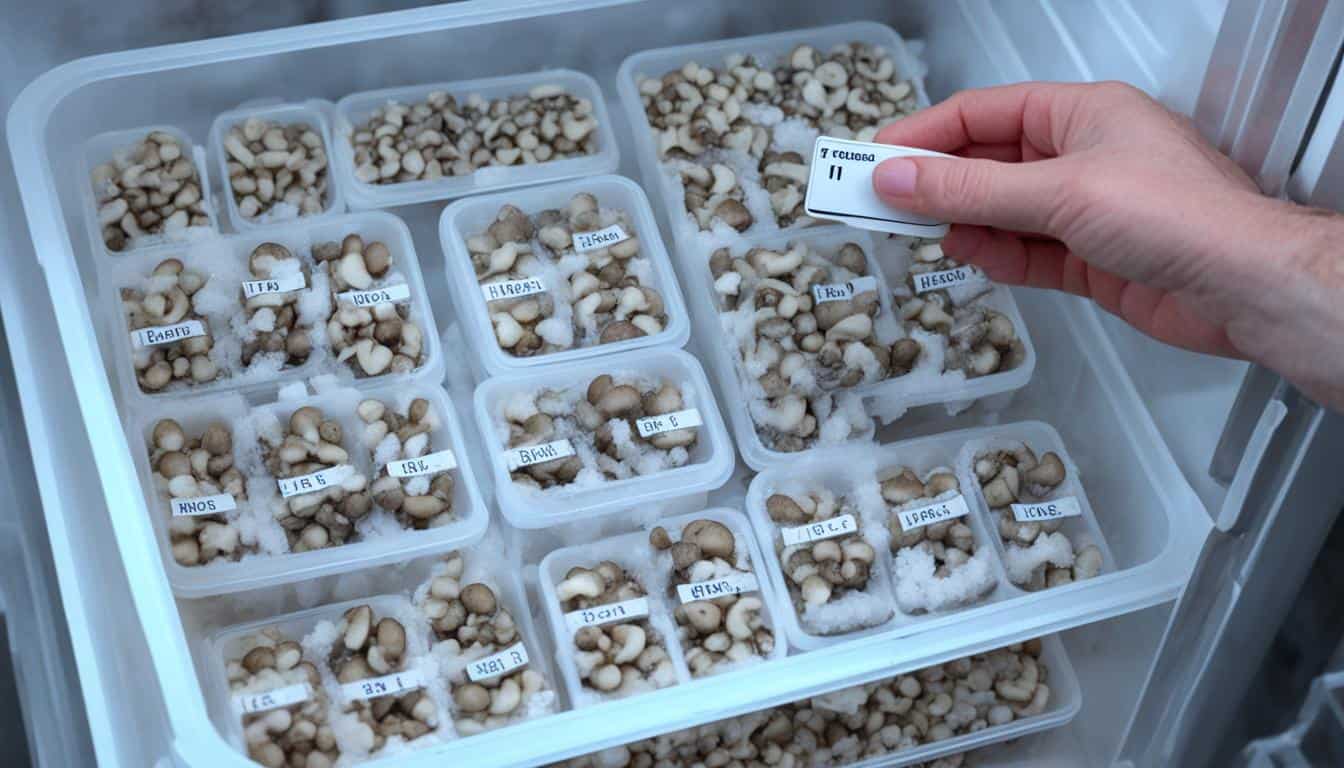
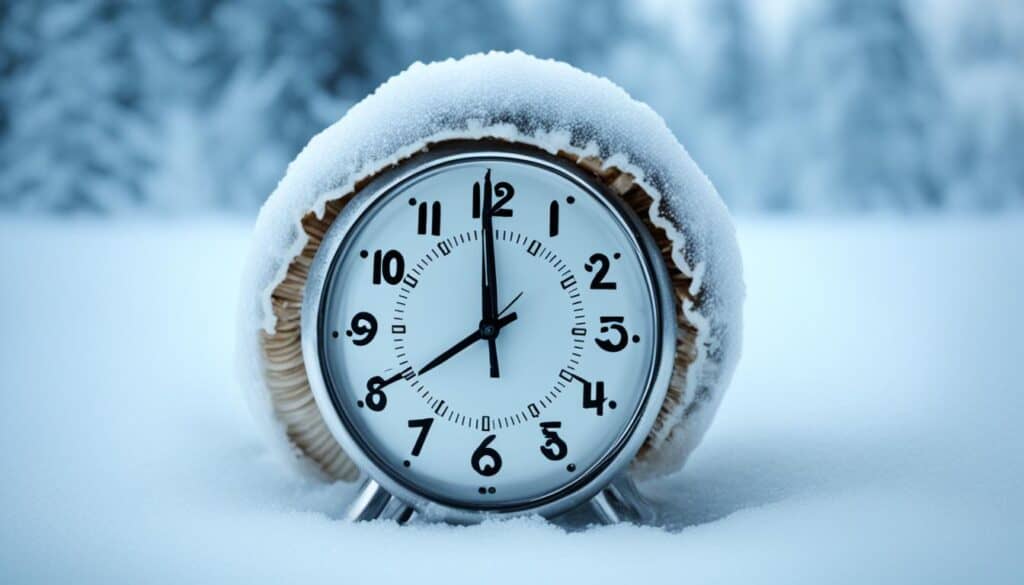
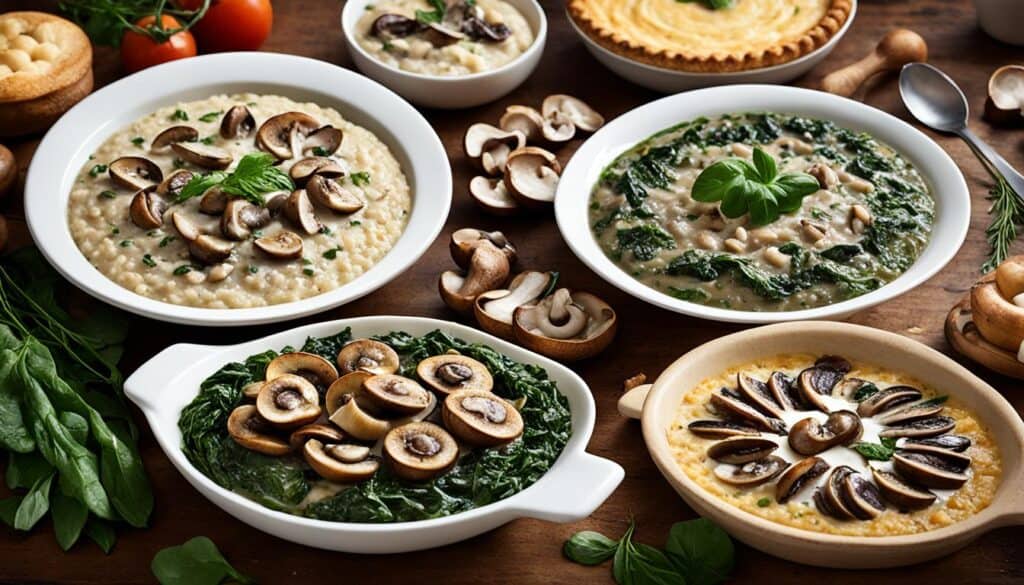
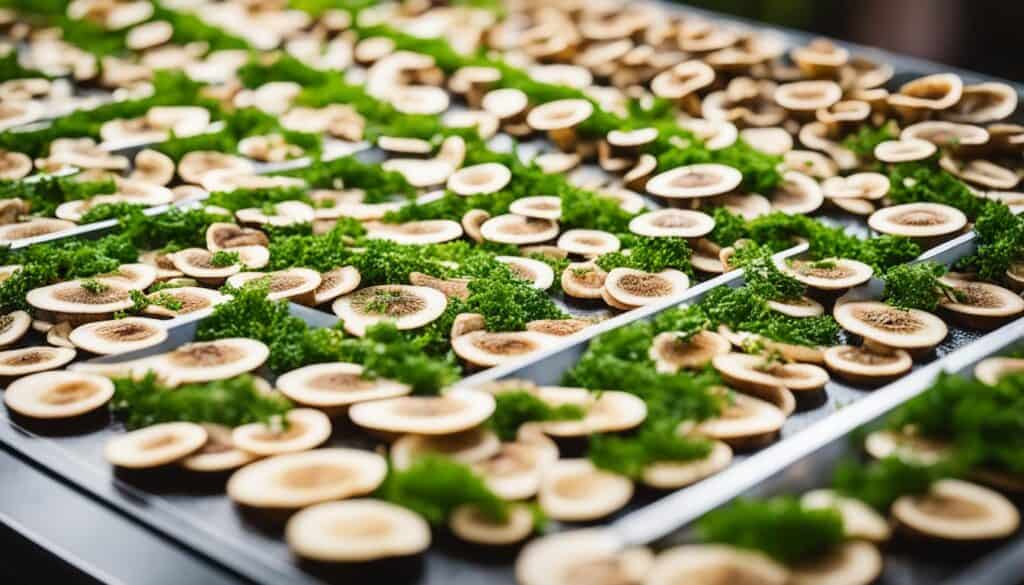
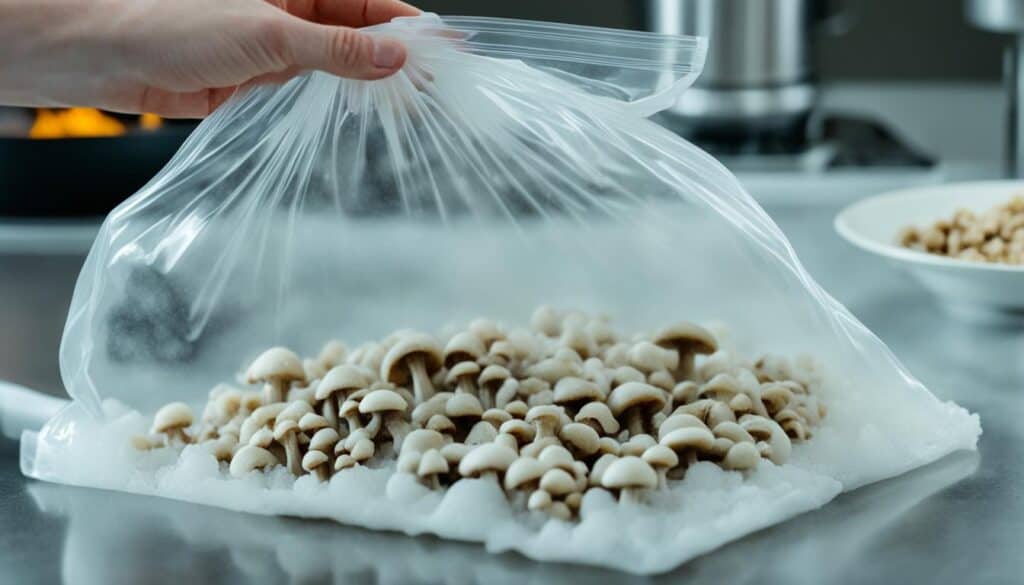
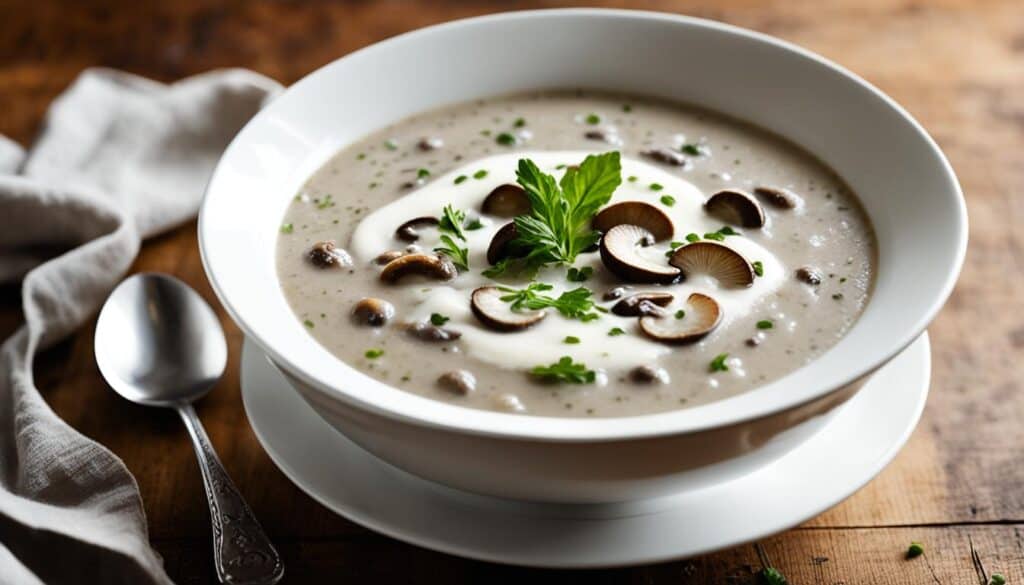

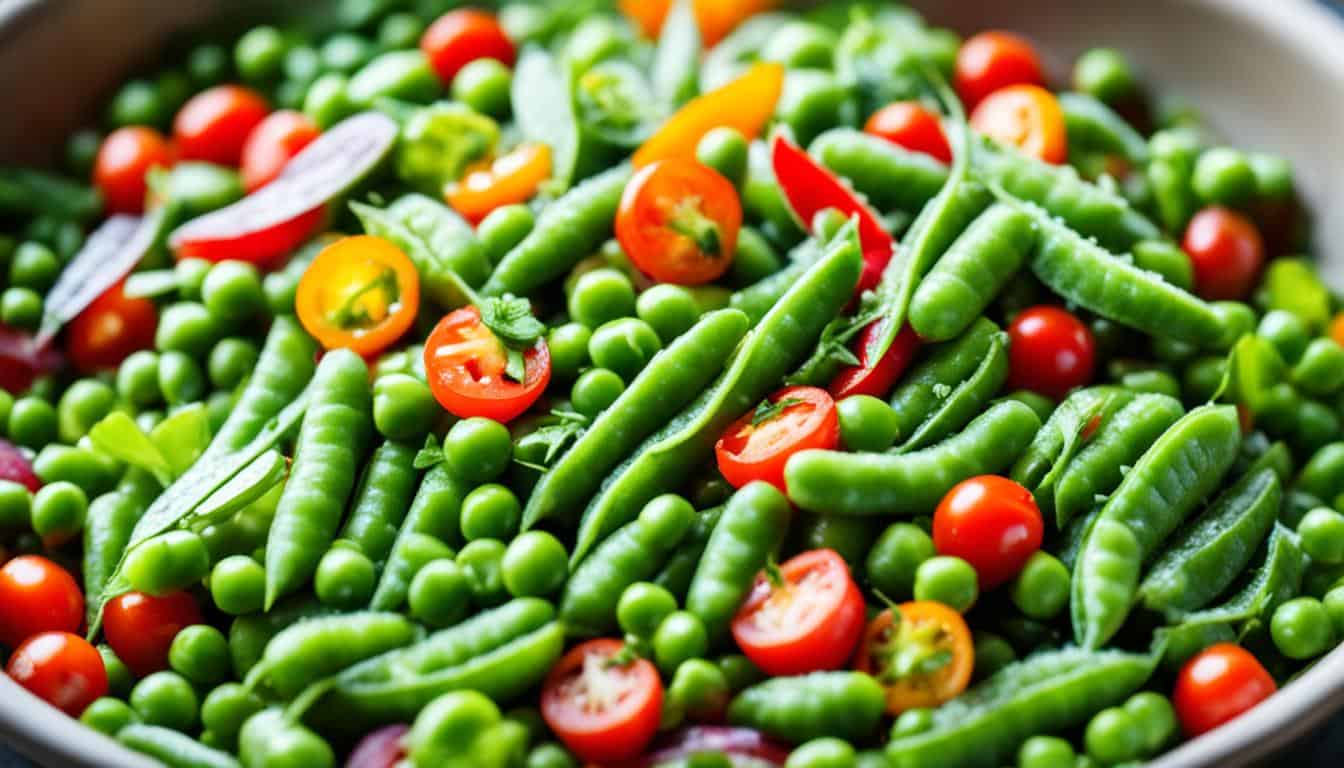
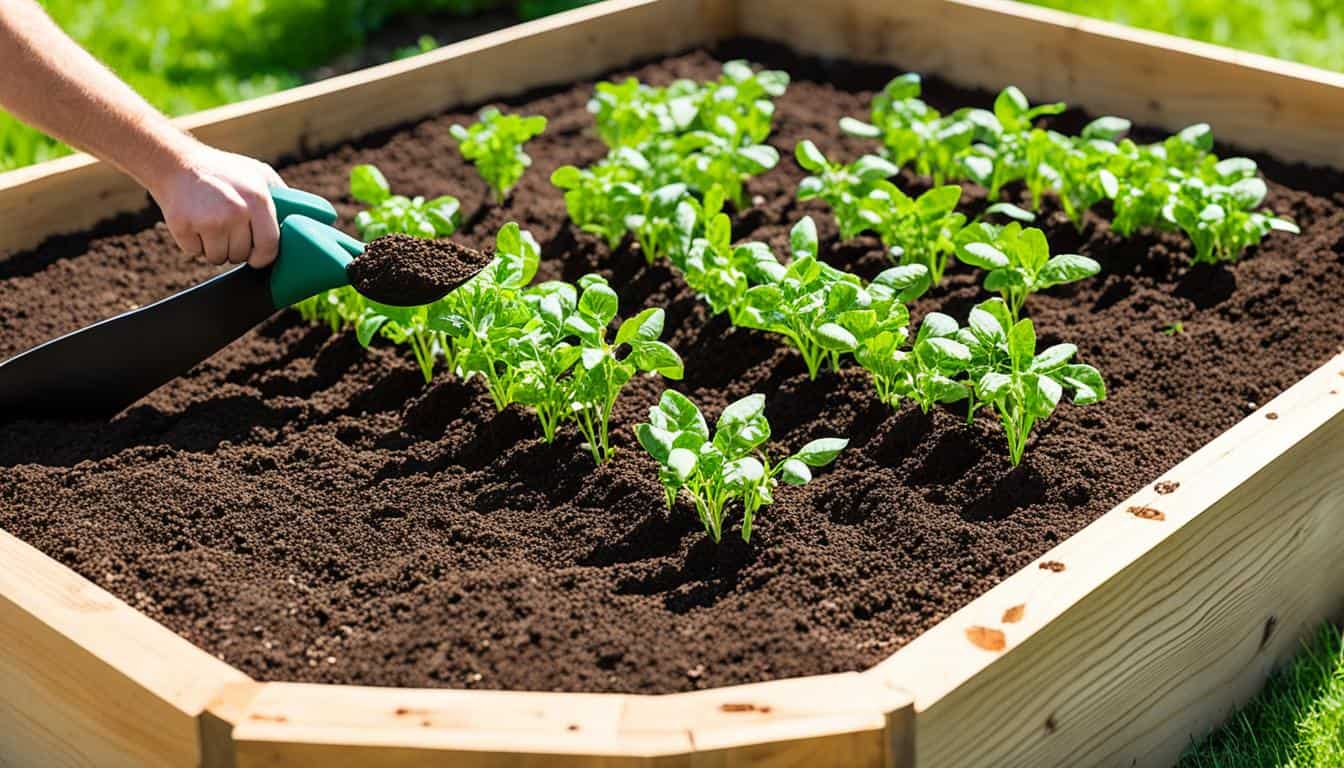
Leave a Reply